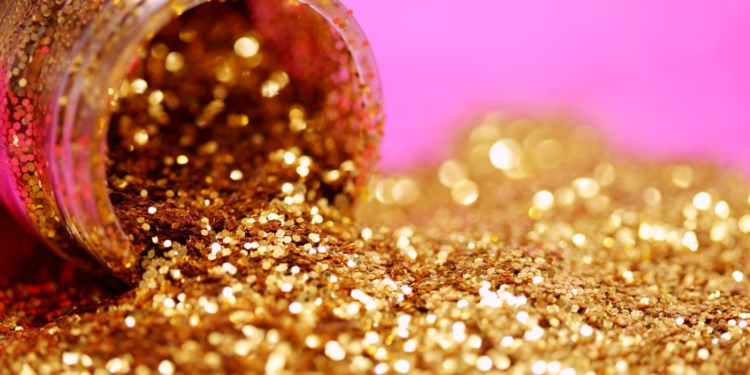Throwing a lot of plastic in the air isn’t very sustainable. And putting it on your face as cosmetics isn’t any better. Worse yet if it’s microplastics. That’s where Bioglitter comes in.
Ronald Britton had been in the sparkling power business for a while before unveiling his new invention. But can Bioglitter, a new kind of glitter that’s biodegradable in water, really reduce microplastics in the environment?
Microplastics are terrible. They’re hard to pick up, almost impossible to remove completely, and, if let alone, won’t biodegrade. They will, however, find their way inside living organisms, including the ones that make up our diet.
While glitter is only a small part of microplastics, even just among cosmetics, it is one of the most visible. It does sparkle, after all.
What is Bioglitter?
Bioglitter is a product by Ronald Britton Ltd., invented by Ronald Britton in 2010 and unveiled in 2014. In 2023, the biodegradable glitter brand’s lineup was expanded and relaunched. It now includes 11 whole products, most of which have a “biodegradable” certification, at least in fresh water.
The company’s range of glitters includes Craft Bioglitter for amateur arts and crafts; Cosmetic Bioglitter for body art, nails, and other cosmetic applications; and Deco for technical use, mostly aimed at the fashion business. Each product line includes different products, some of which forgo aluminum completely and are supposedly entirely biodegradable.
Cosmetic and craft Bioglitter are the more popular varieties among the general public, but the fashion industry was one of Ronald Britton Ltd.’s first big clients. That said, cosmetic Bioglitter was the first.
Bioglitter vs plastic glitter
Bioglitter uses regenerated cellulose from certified sources instead of the PET of plastic glitter. And while some of their products include aluminum, the coating has been optimized to be as thin as possible.
Almost every new Bioglitter product passes the recent EU regulation on microplastics, which will effectively ban traditional glitter from the Union. Bioglitter seems to be one of the few products to currently clear the requirements.
But make sure it’s real Bioglitter! According to the product’s website, there are plenty of counterfeits around the market.
Related Articles: Microplastics Found in Clouds: What Now? | Cutting Down Microplastics: EU’s Plan to Reduce Pollution | Why We Should Not Reuse Plastic Water Bottles
How sustainable is Bioglitter?
Throwing microplastic into the environment is bad, that’s a no-brainer. But is Bioglitter the perfect alternative? The short answer is no, not quite. Let’s take a close look at the problem.
For one, Bioglitter releases a lot of cellulose into the environment. Biodegradable doesn’t always mean clean. Disposing of a large quantity of Bioglitter can tip the balance of cellulose in the local ecosystem. This can encourage the growth of invasive species in a new environment.
Another problem is that biodegradable glitter isn’t compostable glitter. Bioglitter only breaks down in freshwater, and that’s not even true for all their products. Unless it’s collected and dissipated in water, Bioglitter might as well not be biodegradable.
Bioglitter and fresh water
Overall, research found that Bioglitter and plastic glitter have similar effects on fresh water fauna and flora. This is due to their influence on the base of the food web. Biodegradable or not, glitter still impacts the diet of vegetation and small organisms. This change ends up changing the balance of the entire local food chain.
Bioglitter is a promising development for the fashion and make-up industries, so it’s easy to be swiped away by the hype.
But it’s also a relatively new technology whose effects on the environment we don’t perfectly understand. That’s why many companies that switched to Bioglitter have decided to forgo shiny powder entirely.
Alternatives to Bioglitter
Ultimately, the most sustainable alternative to plastic glitter is not Bioglitter or any other kind of shimmering non-plastic. Glitter is a special kind of sparkly decoration, sure, but it doesn’t have a monopoly on fun.
For example, some festivals ditched glitter for petals or grounded grass. The same trade organization proposes body paint and inks as alternatives to cosmetics, though those products can also be problematic.
Editor’s Note: The opinions expressed here by the authors are their own, not those of Impakter.com — In the Featured Photo: Gold glitter spilled on a pink background. Featured Photo Credit: Alexander Grey.










